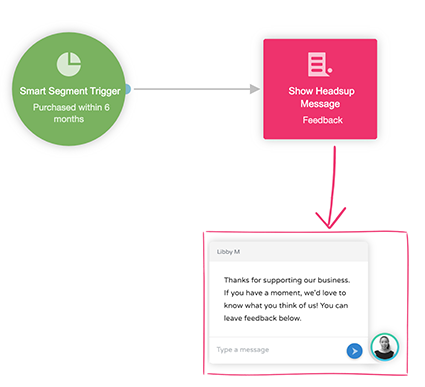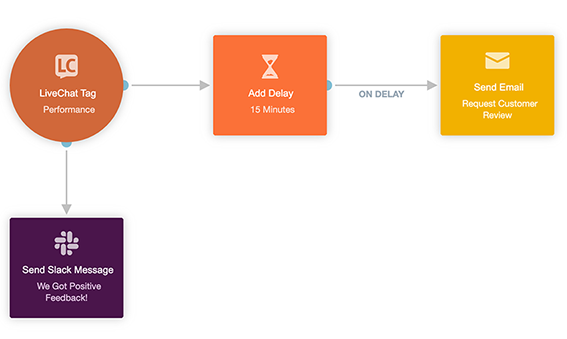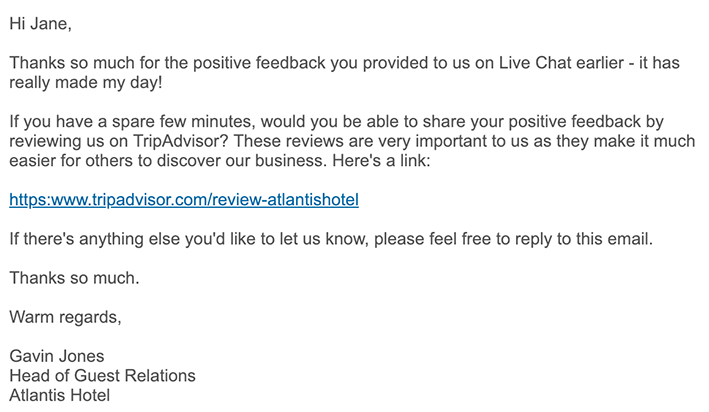January 2, 2020
Effective ways you get can quality customer feedback for your small business
A study conducted by American Express found that the typical American customer tells an average of 15 people if they’ve had a bad customer service experience with a brand. However, only 1 in 26 unhappy customers will actually express their complaints to the business in question (ThinkJar). The rest will just vote with their feet (and wallets) by leaving — and the business may never know what they’ve done wrong. If you run a business, this is a huge blow that can easily be prevented. How? By making it easy for your customers to provide quality feedback.
Why is customer feedback so important?
As a business owner, you know your product by heart. Your team has tested every feature (and scanned their eyes over every single line of copy on your landing page), and your friends and family all agree that your product is pretty amazing. Unfortunately, if you’re not getting external feedback about your product, you are likely to overlook its imperfections. At the same time, your product may be so good that it may not necessarily need negative feedback. However, if the experience around your product is clunky, it may change the way your customer will feel about your brand and product.
While it’s always nice to get positive feedback, it’s also just as important to receive negative feedback, even though they’re not always fun to listen to. Negative feedback has the potential to provide valuable insights on where or how your business processes or customer service can be improved. It also presents an opportunity for you to address a customer complaint or concern directly — and turn their experience into a positive one.
If you can make customers happy by solving their problems, then you’re more likely to get good referrals instead of bad ones. According to the aforementioned American Express study, each happy customer will tell 11 more people about a positive experience with a business, so the results of your efforts will multiply.
Keep your ears to the ground by implementing the following options to collect customer feedback for your small business:
Surveys
Surveys are widely used to get customer feedback; they’re a simple tool for measuring everything from customer satisfaction to brand awareness. When done right, surveys can uncover a lot of things about your small business that you might have otherwise overlooked.
Case studies show that placing surveys in business locations has been proven to increase the likelihood of customers filling them out. If you’re an e-commerce retailer or online-only service provider, this is not a viable option. Try using Autopilot’s Delighted integration to send NPS email surveys at the right time and action customer feedback accordingly. In the example below, we use a Smart Segment trigger to single out paying customers, sending the NPS survey after 90 days to determine how happy your customers are.
It’s essential to keep your surveys as short and as simple as possible — you don’t want to make your surveys so long and complicated that your customers give up before completing it.
Online feedback forms
If you’re unfamiliar with online feedback forms, keep in mind that these are slightly different from surveys. Online feedback forms are dynamic forms used to capture customer feedback on websites and apps. Applying these forms to your website allows you to gauge which issues your customers are running into, why your leads aren’t converting, and much more.
A simple contact form on your website using Autopilot’s form capture or Typeform integration allows easy exchange of ideas between your business and your customers. Ensure you don’t overcomplicate your form by asking long-winded questions; make every word and every question count, ensuring each is aligned with the purpose of the form. Here are more tips on how to design the perfect website form.
Just want to ask your customer a single open-ended question? Try using Autopilot’s HeadsUp integration to display personalized and timely messages to customers that visit your website, landing pages, online store, or app. You can show your message to anyone who visits you or to a specific segment (for example, customers who purchased from you within the last 6 months).

Social media
Social media platforms can be a great way to engage with your customers and get their feedback. With billions of people around the world already engaged in these social media communities, you should consider creating a presence for your small business. You can also provide customer support on social media, making it easy for those valuable customers who want an easier, faster way to get in touch with you than by phone.
The trick here is identifying what social media platforms your customers are active on. For example, Newcastle Comedy Festival organizer Andrew Milos identified Facebook as the dominant social media platform for connecting with potential attendees. In contrast, a marketer for a restaurant group might prefer Instagram’s visual appeal to promote new dishes.
Depending on your business, having a presence on Facebook, Instagram, or YouTube may not be enough. Consider exploring niche community-based platforms. For example, if you own or manage a restaurant, consider listing your business on Yelp or Zomato; if you run a hotel, ensure it’s listed on TripAdvisor.
Live chat
Chat is the next best thing to talking with a customer in person, making it a valuable tool for receiving customer feedback. Best of all, you can get targeted feedback in real-time while chatting to the customer. Autopilot allows you to integrate your marketing stack with chat software such as LiveChat and Intercom, helping you to do more with your leads and users beyond the initial chat conversation.
For example, you may be talking to a customer on LiveChat and they close off the chat by saying, “btw I’ve been a customer for 5 years now, you guys are amazing.” This kind of positive feedback may put a smile on your face, but you should also treat it as an opportunity to invite this customer to share that feedback with their friends. With Autopilot’s LiveChat integration, you can tag that chat with “positive feedback” or “performance” and trigger an email, asking the customer to leave a review like so:

Your email can look something like this:

LiveChat also provides customers with additional chances to leave feedback: either by giving the chat agent a ‘thumbs up’ or ‘thumbs down’ during the chat or by providing additional comments in a survey after a chat.
Customer journey touchpoints
Asking for feedback after the user has completed a call-to-action can also result in receiving high-quality feedback. For example, a good time for a restaurant or call center to ask for feedback would be after the customer has paid the bill or hung up after a phone call. For e-commerce businesses, an ideal time to request feedback would be after a customer has completed a purchase. Another time to ask for feedback is when a customer stops buying from you or returns your product. And if you work for a SaaS company, you would ask trialists what they thought of your product a few days before their free trial is ending so you can identify areas for improvement (see below).
Don’t miss out on opportunities to learn from your customers
Collecting and actioning customer feedback goes beyond just putting a smile on your customer’s face. The satisfaction levels of your customers can be linked to higher revenue for your business, because satisfied customers are more willing to spend more money on your products or services. We’ve outlined several easy ways that your business can capture customer feedback by using Autopilot. In doing so, you can gain valuable insights that you can use to improve operational processes and provide a better experience for your customers.












